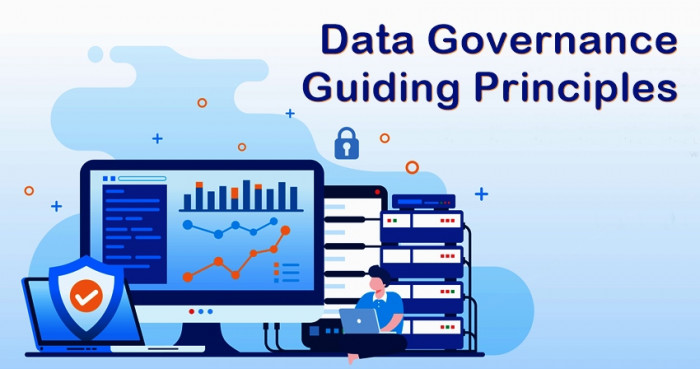
In today's data-driven world, organizations are generating and collecting vast amounts of data. However, without proper management, this data can become overwhelming and pose significant risks to the organization's operations, compliance, and decision-making processes. This is where data governance comes into play. Data governance provides a framework for managing and protecting data throughout its lifecycle, ensuring its quality, integrity, and usability. In this article, we will explore the key principles of data governance and how they contribute to effective data management.
Understanding Data Governance
Definition and Importance
Data governance refers to the overall management of the availability, usability, integrity, and security of an organization's data assets. It involves the processes, policies, and roles responsible for ensuring that data is reliable, consistent, and trustworthy. The importance of data governance lies in its ability to establish a solid foundation for data management, enabling organizations to make informed decisions, comply with regulations, and gain a competitive edge.
Key Components of Data Governance
Data governance comprises various components that work together to ensure effective data management. These components include:
- Data Stewardship: Designating individuals or teams responsible for data assets and their quality.
- Data Policies: Establishing guidelines and rules for data collection, storage, access, and usage.
- Data Standards: Defining consistent formats, structures, and definitions for data across the organization.
- Data Processes: Implementing workflows and procedures for data management and decision-making.
- Data Security: Safeguarding data from unauthorized access, breaches, and data loss.
- Data Compliance: Ensuring adherence to relevant laws, regulations, and industry standards.
Data Governance Principles
To achieve effective data management, organizations must adhere to the following data governance principles:
Accountability and Ownership
Every piece of data should have an accountable owner who is responsible for its accuracy, completeness, and compliance. Clear ownership ensures that data-related decisions are made by individuals who understand its value and implications.
Data Quality and Integrity
Data should be of high quality, accurate, consistent, and relevant to the organization's needs. Regular data profiling, cleansing, and validation processes should be in place to maintain data integrity throughout its lifecycle.
Data quality and integrity are essential for reliable decision-making and accurate analysis. Organizations should establish data quality standards, perform regular data profiling, implement data cleansing processes, and ensure data accuracy, completeness, consistency, and timeliness.
Compliance and Security
Data governance should address compliance requirements and ensure the security and privacy of sensitive data. It involves implementing controls, policies, and procedures to protect data from unauthorized access, breaches, and data loss.
Data security and privacy are paramount in data governance. Organizations must implement robust security measures to protect data from unauthorized access, breaches, and cyber threats. Privacy regulations, such as GDPR or CCPA, should be complied with to safeguard individuals' personal data.
Transparency and Accessibility
Data should be easily accessible to authorized users while maintaining transparency regarding its origin, meaning, and usage. Organizations should provide clear data documentation and metadata to facilitate data understanding and usability.
Data Lifecycle Management
Data governance encompasses the entire data lifecycle, from creation to retirement. It involves defining processes and controls for data acquisition, storage, transformation, and disposal to ensure data remains valuable and relevant.
Data governance encompasses the entire data lifecycle, from data creation to disposal. Organizations should establish processes and policies for data acquisition, storage, usage, sharing, archiving, and deletion. Managing the data lifecycle ensures data remains relevant, accurate, and aligned with business needs.
Collaboration and Communication
Successful data governance requires collaboration and communication among stakeholders, including business users, IT teams, data stewards, and executives. Effective communication channels foster understanding, alignment, and decision-making based on data insights.
Effective communication and training are vital for successful data governance. Organizations should foster a data-driven culture by promoting data literacy and awareness among employees. Regular communication channels, training programs, and data governance documentation help employees understand their roles, responsibilities, and the importance of data governance.
Continuous Improvement
Data governance is an ongoing process that requires continuous improvement. Organizations should regularly assess and enhance their data governance practices to adapt to evolving business needs, technological advancements, and regulatory changes.
Implementing Data Governance
To implement data governance successfully, organizations can follow these steps:
Assessing Current State and Defining Goals
Evaluate the existing data management practices, identify gaps, and define goals for data governance. Understand the organization's data landscape, data sources, and data-related challenges.
Establishing Governance Framework
Develop a data governance framework that aligns with the organization's objectives, structure, and culture. Define the governance structure, roles, and responsibilities of data stewards, data custodians, and data users.
Defining Roles and Responsibilities
Clearly define the roles and responsibilities of individuals involved in data governance. Assign data stewards responsible for specific data domains, ensuring accountability and ownership.
Developing Policies and Procedures
Create data policies and procedures that reflect the organization's data governance goals. Define data standards, data quality metrics, data access controls, and data lifecycle management processes.
Implementing Data Management Tools
Leverage data management tools and technologies to support data governance efforts. These tools can automate data profiling, data cleansing, metadata management, and data lineage tracking.
Monitoring and Measuring Performance
Establish monitoring mechanisms to track the effectiveness of data governance initiatives. Regularly measure key performance indicators (KPIs) related to data quality, compliance, and data management processes.
Benefits of Data Governance
Data classification is the process of categorizing data based on its sensitivity, criticality, and regulatory requirements. By classifying data, organizations can determine appropriate security measures, access controls, and retention policies for different types of data.
Implementing effective data governance brings numerous benefits to organizations, including:
- Improved data quality and integrity, leading to more accurate and reliable insights.
- Enhanced decision-making based on trusted data.
- Increased compliance with data protection regulations.
- Reduced risks of data breaches and unauthorized access.
- Greater transparency and accessibility of data.
- Streamlined data management processes and reduced data redundancy.
- Enhanced collaboration and communication across teams.
- Improved data-driven culture and data literacy within the organization.
Challenges in Data Governance
While data governance offers significant advantages, organizations may face some challenges during its implementation, such as:
- Resistance to change and lack of buy-in from stakeholders.
- Complexity in managing diverse data sources and formats.
- Data privacy concerns and legal considerations.
- Limited resources and budget constraints for data governance initiatives.
- Data silos and lack of data integration.
- Ensuring data governance practices align with evolving technology and regulations.
Conclusion
Effective data governance is essential for organizations to harness the power of data while maintaining its quality, integrity, and security. By adhering to data governance principles, organizations can unlock the full potential of their data assets and make informed decisions based on trusted information. Implementing data governance requires careful planning, collaboration, and continuous improvement. With proper data governance practices in place, organizations can navigate the complexities of the data landscape and gain a competitive edge in today's data-driven world.
















